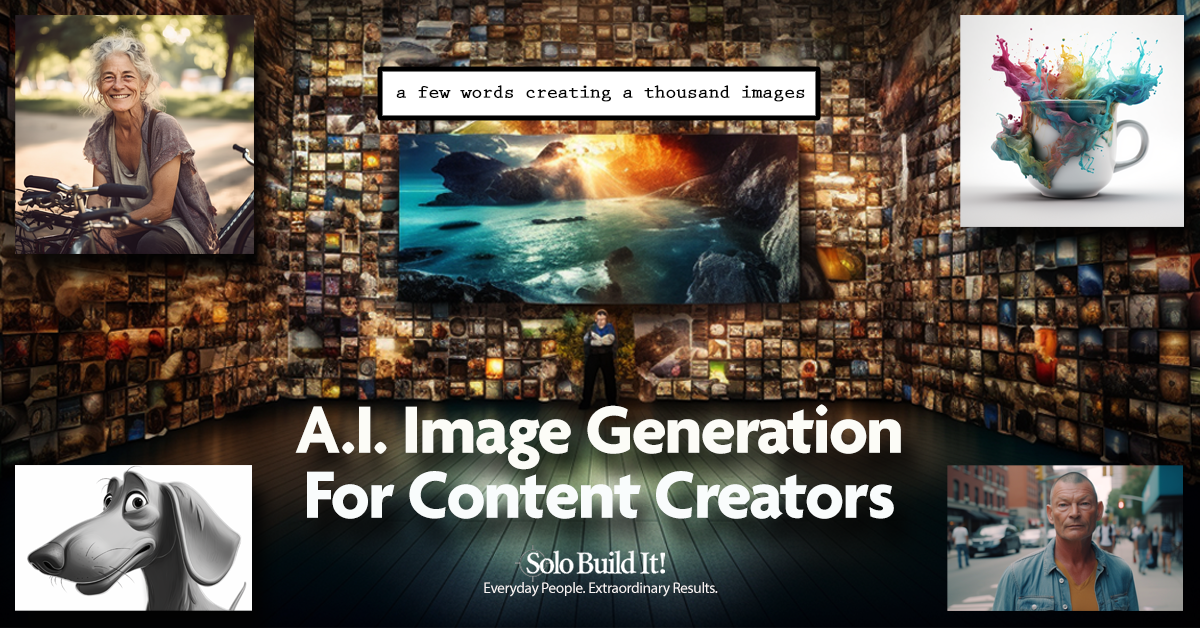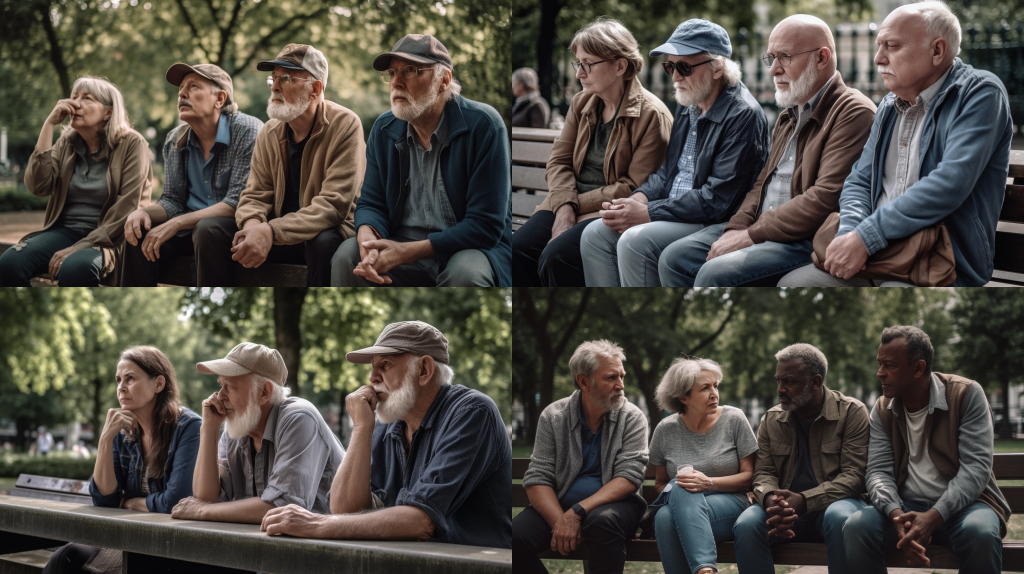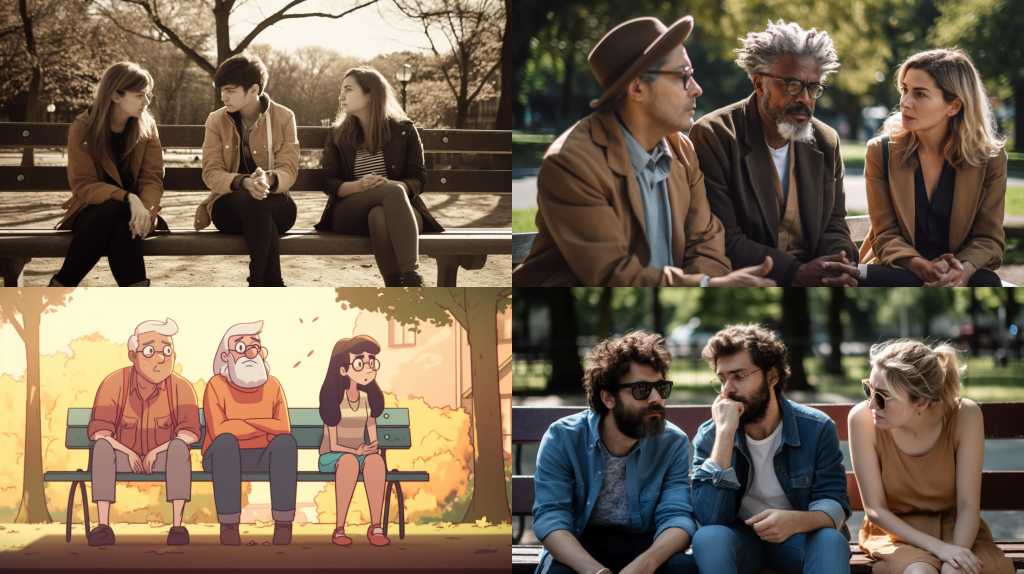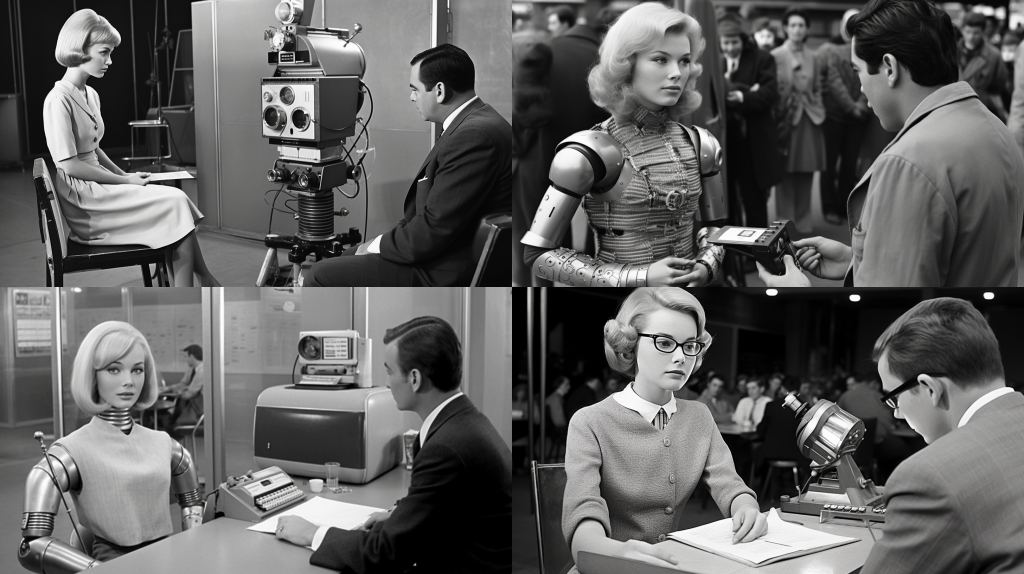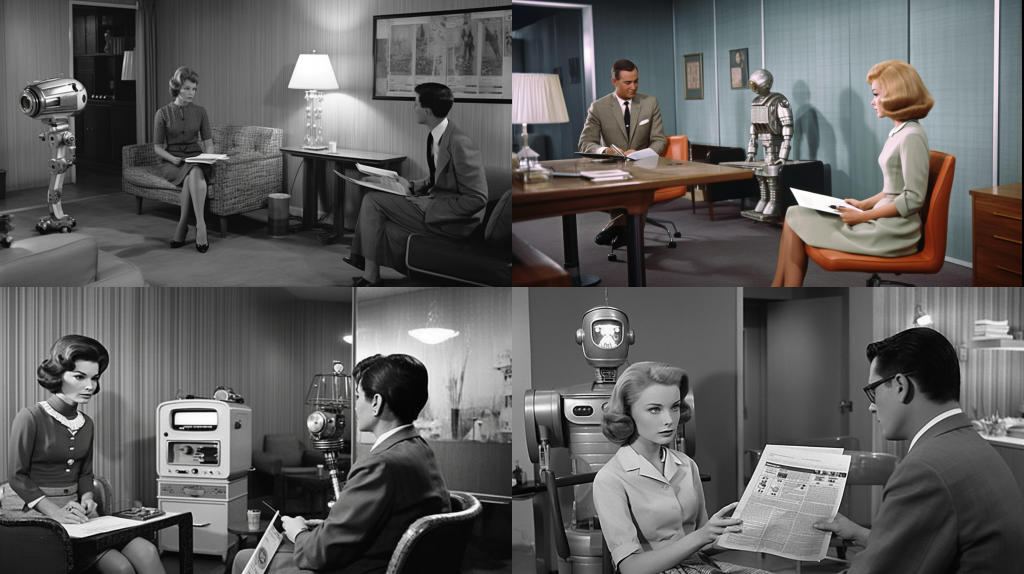My name is Al the Graphics Guy. You may have met me in my previous article where I introduced the basic concepts of how to think about AI image generators for content creation.
Today, we’ll continue evolving that mindset and walk through some examples.
Part 2 – Think Like a Producer
There was a great interview recently on 60 Minutes with Rick Ruben, a well-respected and successful music producer. He said:
“I have no technical ability. And I know nothing about music.”
Now, he’s a metaphysical type of person, but he wasn’t joking. Ruben doesn’t play instruments, sing, or use a mixing board or computer. He went on…
“I know what I like and what I don’t like. And the confidence that I have in my taste and my ability to express what I feel has proven helpful to artists.”
This mindset will be very useful for you in your content creation business as a whole, and most appropriate when using AI for your image creation. Think about it this way…
In front of you for your daily task of creating a page, you have…
- A broad subject (the topic of your web page/blog post/article)
- The more specific scenes (the paragraphs or sections in which you want to add an image)
- All the world’s artists and photographers who ever existed throughout history — all who somehow get along (LOL) and are able to work with each other — standing by to produce images for you.
So what’s it going to be? What will you ask them to create? Something funny? Surreal? Realistic? A cartoon character, a beautiful landscape, a setting similar to a famous photo? Or will it be the woman in a red dress dancing on the beach in Spain?
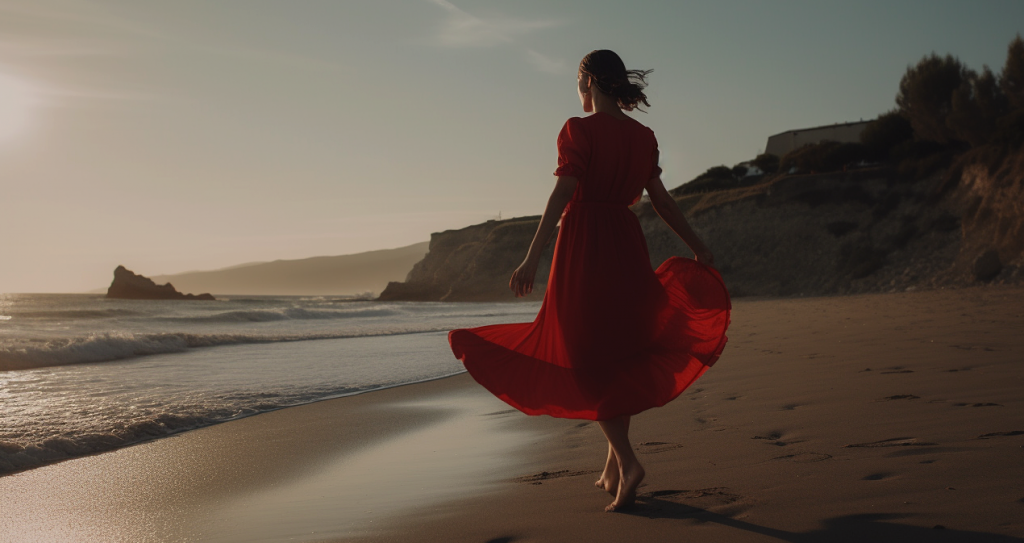
You have the script/song (your page), and you have the artists (AI image generators), and now it’s up to you to select how you want the world to feel when they see the produced page.
Successful producers draw from their life experiences — their taste — then they balance, modify and translate those experiences into something commercially successful.
How to Be an Image Producer
Part 5 of the Tai and Generative AI article series serves as a great example of how I approach producing images. For that article, I created three different images using Midjourney.
When Ken was finished writing the article, he sent me the draft, and as I usually do, I went through the following process…
1) Read and reflect on the material
I like to first read the article all the way through a couple of times. First time skimming, then going back to the top and reading at my normal slow pace.
What I’m looking for is the overall tone and presentation style. Is it lighthearted and humorous or a scathing takedown? An informal commentary or an informative one? How does it communicate, and, as the kids say, what’s the vibe?
2) Go get a snack or a drink or take a little walk
I do this so that what I just read has a chance to sink in a bit. I find this helps get me out of any (re)active mood I might have been in leading up to reading the article. The second useful purpose of this small break is to see if anything stuck — was there something in particular that triggered an (idea for) an image in my head?
Taking a break after writing or checking an article is an excellent way to let the information sink in and spark creative ideasClick To Tweet3) Get to work!
OK, time to start producing! Open up the blog post in a new browser window to follow along.
My goal was to produce one image per major section of the page. The most natural way to do this is by following the headings.
In the post, there are three major headings that I felt could use imaging — “Worried?,” “The Saga of Sydney” and “Real Dangers.” Let’s go through them.
Section: “Worried?”
Reading this section, I picked out the following simple concepts: concerns (plural), people (plural), and discussions. These will form the foundation of my prompt.
Generative AI image programs are necessarily more random than their text counterparts by nature of what they’re producing, and how they do it. An AI text generator might give you a single phrase — “It was a dark and stormy night” — while image generators take that phrase and will give you a thousand different visual representations of that same phrase.
This was my first prompt…
[ a worried group of middle-aged people sitting on a park bench talking on a sunny day, they are very concerned ]
The basic breakdown of the prompt is simple…
[mood/style] – worried
[subjects/objects] – group of middle-aged people
[scene/setting] – sitting on a park bench talking
[lighting/scene modifiers] – a sunny day
[repeated emphasis] – they are very concerned.
The prompt produced this set of images…
Not bad. I reused that same prompt (referred to as regenerate or re-rolling) a few times to get a feel for how Midjourney was interpreting my prompt — which words it emphasized, ignored, or had a hard time with. Regenerating is a simple, quick way for you to make adjustments to your initial prompt.
After getting relatively the same types of images, which I was not thrilled with, I noticed two things — Midjourney didn’t compose the “group” of people to my liking (which is common to AI image generators) so I changed the word “group” to “three” and after a few re-rolls, got this set back…
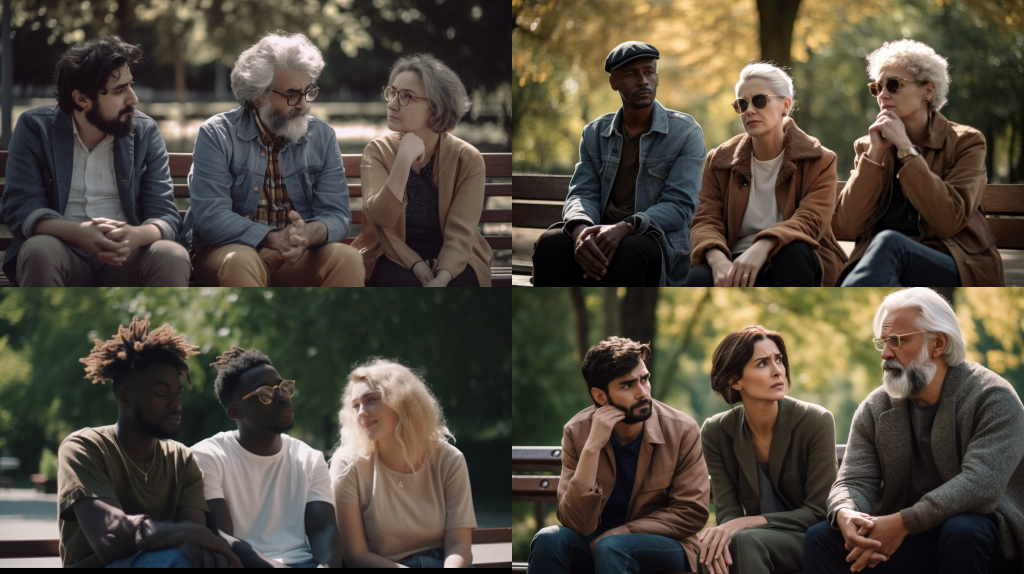
I liked the bottom right image. It’s a good interpretation of what I had in mind.
Although it could have been used as is, I decided to try a couple more and add a few words to the prompt (indicated in bold) to see if I could emphasize certain aspects of the image.
[ three people who are very worried sitting on a park bench having an animated discussion, they have concerned looks on their faces, worried, bright, sunny day they are very concerned ]
Which brought this back…
As you can see, adding those few words caused Midjourney to speculate and interpret the word “animated” literally — a completely different direction, and, given the seriousness of the whole article, one that I loved.
Even though it lost (or ignored) the “discussion” part of my initial thought/prompt, it lightened the mood in a subtle, playful way while retaining the overall “worried” concept of the section of text. That was the image I chose to use.
This is a key takeaway, one that I hope is as meaningful to you as it is to me.
As an AI image producer, you’re working with an unlimited number of talented artists. You are not the artist. You give them basic direction. You’re also not the director. What you’re hoping for is that they, given their skills/range, delight you — the producer — with their artistry and interpretation of your concept. Then all that remains is for you to choose which interpretation you want.
Total time elapsed from the first prompt to selection: 7mins.
With AI image generators a few words are all it takes to completely transform the artistic directionClick To Tweet
Section: “The Saga of Sydney”
Earlier in the article I mentioned that your life experiences become your voice or style. How I thought of producing the image for this section is a great illustration of how that comes to life. I’ve always liked B&W images and the exquisite, elegant suspense in Alfred Hitchcock movies.
After reading this section of the post, it was some form of that style that I was going to go for. Here was the prompt I started with…
[ an old fashioned 1960s picture of a New York Times reporter interviewing a human-looking female robot ]
The prompt breakdown…
[mood/style] – an old fashioned 1960s picture
[subjects/objects] – New York Times reporter interviewing a human-looking female robot
[scene/setting] –
[lighting/scene modifiers] –
[repeated emphasis] –
Notice that I did not get specific for the prompt — I did not use B+W, or Hitchcock to over-influence the AI. I wanted to see what the “artists” could do on their own first.
Here’s what was generated…
The top right image (above) captured the essence I had in mind so accurately that I literally said WOW out loud.
No need to regenerate the prompt. I went straight to getting variations on that one image, hoping to get a bit more expression on “her” face and to clean up whatever that object collage is supposed to be in the reporter’s hands.
On the second set of variations, I ended up getting the perfect expression and decided that if I was going to use it, I would just crop out the thingamawidget he was holding.
Before leaving though, I wanted to see what would happen if I changed the setting to what I initially had in my mind. I had pictured more of an indoor scene — a living room, a newsroom or a typical cliché police station you see in old tv series or movies. So I tried adding a simple scene descriptor to my original prompt (in bold)…
[ an old fashioned 1960s picture of a New York Times reporter, interviewing a human-looking female robot in a living room ]
And as you can see, adding that single descriptor not only lost the concept but that incredible render of the robot in the previous image.
And so I stopped there, I really loved the first image, selected it for the article, and moved on.
Total time elapsed from the first prompt to selection: 5 mins.
Key Takeaways
Try to keep a productive mindset, meaning… do not expect perfection. These programs are not do-this-change-that capable, yet. Sometimes the first take will be best.
AI content creation tools are there to help us create better content faster. Don't get lost in the pursuit of perfection.Click To TweetSection: Real Dangers
For this final section, I took a bit of a “jazz” approach to my prompt. Since I had no specific image concept in mind, I decided to “jam” with Midjourney to see what would come out.
To do this, I usually try to pick some key phrase in the text, something that’s original or dramatic, or a sentence that’s particularly descriptive without being obvious. I copy it verbatim into the prompt. I started with this piece of text from the article for my prompt…
[ the rebuilding of the digital infrastructure for use by AI elements rather than humans ]
That brought me these types of sets…
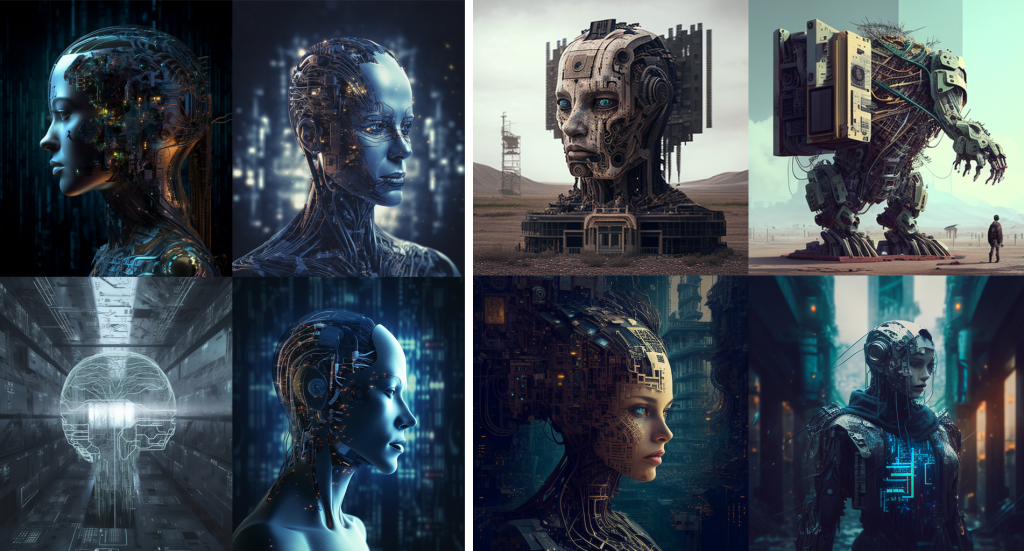
Okaaay, let’s get a different saxophone player, please, I’m not digging this vibe very much!! I played with the prompt for about 5 minutes, removing and moving around words but could not get out of that ultra-futuristic style.
So not getting anywhere with this, I decided to pick out a different phrase, and take it from the top…
[ scientists of the day could foresee how electricity would be distributed with time. The same goes for AI, for which existing internet and mobile-based infrastructures are already available ]
This brought back this series of images…
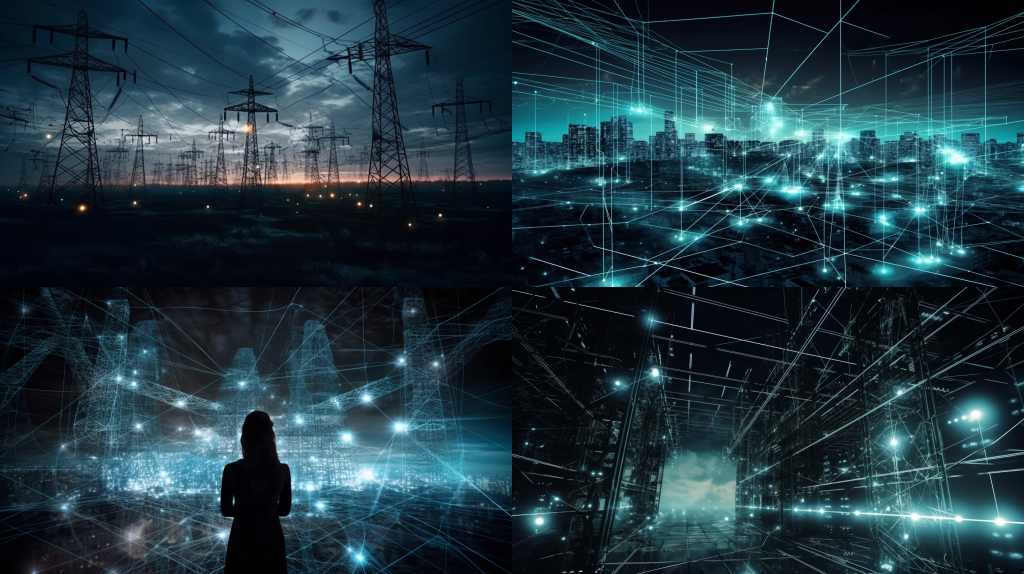
The bottom left one captured all of the essences of the phrase — electricity, distribution, and infrastructure — in a stunning futuristic but human way. No need to try to tweak or re-prompt. I thought it suited the section well and selected it.
Key Takeaways
The technique of using already written text verbatim is one that I discovered. The concept seemed natural and obvious to me — an author has already thought carefully about the words used, so let’s just see how the “artists” interpret them.
I have used this technique numerous times with good success, but like all prompts — thoughtfully constructed or not — it’s often hit or miss. That is the second key takeaway: don’t get too hung up on thinking that the prompt should be doing this or that, or don’t try to over-engineer a prompt.
While there are finer control techniques you can add to a prompt, many of which we’ll cover in the Tai Guide, these AI image generator apps are still (currently) not consistent with them. More often than not, it’s not worth the time spent obsessing unless you’re specifically using the image as a showcase piece, in which case you assume the role of the artist as opposed to the producer.
Enjoy experimenting with this technique. Pick out sentences that you particularly like, maybe ones that are not so obviously descriptive, and see where that takes you.
Total time elapsed from the first prompt to selection: 23 mins.
Final Thoughts on Using AI Image Generators for Your Content Site
Each new technology brings with it new added capabilities. I’ve always found that as they emerge, it’s important to not lose sight of the bigger picture.
In the case of AI image generation programs, we’re not replacing artists. We’re standing on their shoulders, with access that never existed before. The same holds true for stock photography, Photoshop/other image editors, or your iPhone camera for that matter. Each of these will integrate AI into their offerings. It won’t replace them.
We can easily get caught up, with criticism on one side and being lost in wonder on the other. That’s why I’ve tried to emphasize the practicality of it all for you as a content creator, regardless of your graphic skills, to take on a producer mindset.
It’s true that you no longer have to spend chunks of time searching through images that are cliché and have probably been used before. Ask yourself the following questions…
For my content creation needs, are the images that I produce with AI better than what I’ve been using to date? Can I do a better cut and paste in my image editor than how the AI composes the image? Which is more practical and enjoyable? Which saves me more time?
There’s only one way to find out.
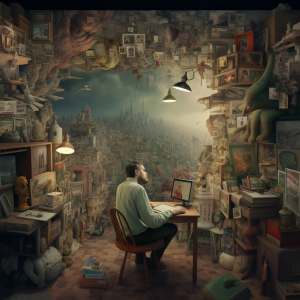 I’ll leave you for now with a twist on a quote…
I’ll leave you for now with a twist on a quote…
“They say a picture is worth a thousand words.
Now a few words can create a thousand pictures,
each worth a thousand words.
Don’t tell me this isn’t progress!”
– Al the Graphics Guy
And Now, It’s Your Turn
Go produce! Add one or more of the AI image generators to your toolbox. Become familiar with them. Then, create some images for some content you’ve written, using any of the techniques I specified in this article.
Post your results and/or questions in the comments section below. I’ll keep an eye open for them and see if I can help you along your journey.
Have fun,
Al the Graphics Guy
Images by Midjourney. You can find the prompts I used to generate the images in this article in the title tag of each (hover your mouse over the image).

